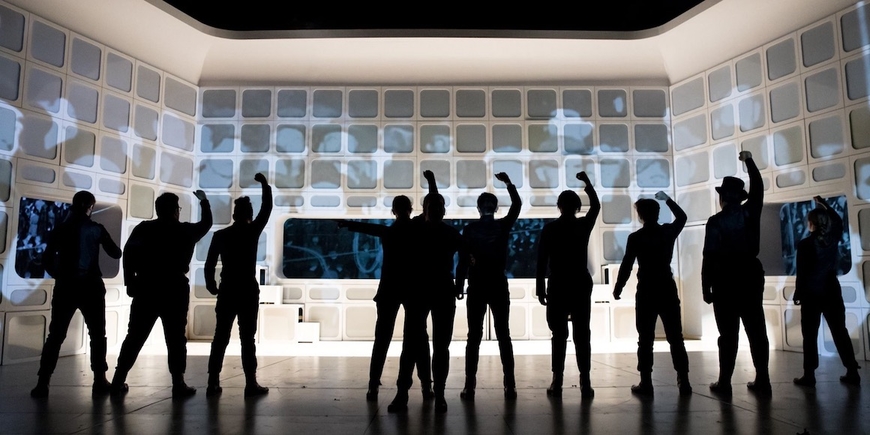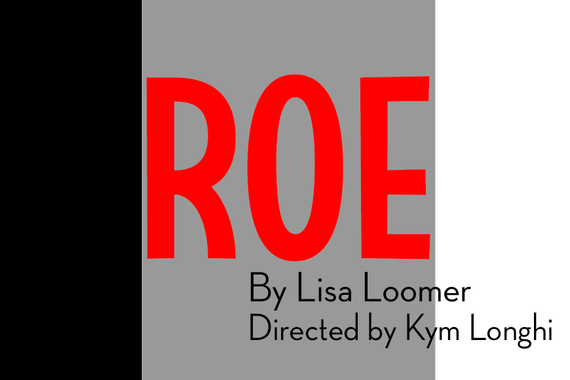Ping Chong and Talvin Wilks on Collidescope 4.0: Speaking to an Ongoing American Tragedy
When black teenager Michael Brown Jr. was fatally shot by a white police officer in Ferguson, Missouri on August 9, 2014, public outcry and national protest sparked what would become the Black Lives Matter movement. Three months later, the first iteration of Collidescope: Adventures in Pre and Post-Racial America opened at the University of Maryland.
This fall, creators Talvin Wilks and internationally renowned artist Ping Chong brought the fourth iteration of Collidescope to the University of Minnesota. Undergraduate and graduate students collaborated with Wilks and Chong to develop site-specific content for the piece, drawing on local history and tragedy to tell a story of lingering Midwestern racial injustice.
Collidescope 4.0 uses the perspective of intergalactic beings to analyze US history and race relations from an external lens. Its unique vantage point addresses racial violence, racism, and social injustice in America, including the murders of young black men, such as Michael Brown Jr., Trayvon Martin, and Jordan Davis.
Chong and Wilks have collaborated on and off since 1993. Chong is the artistic director of NYC-based Ping Chong and Company. He is the recipient of many artistic awards, including the National Medal of Arts. Chong is recognized for bringing a passion and talent for social justice to communities around the world since the 1970s. Wilks is active across the US as a director, dramaturge, and playwright. He came to the University of Minnesota in 2016 as an assistant professor. An archivist and historian of African American theatre, Wilks has an impressive resume of published plays and directorial experience and frequently works with Penumbra Theatre, a prominent African American theatre based in Minneapolis.
Tell us about Collidescope 4.0
Talvin Wilks: Collidescope is designed to engage the audience in a conversation about history and race. It does this by showing moments from the past that may have been forgotten or overlooked but that reveal the way we have engaged in a virulent miscarriage of justice when it comes to the history of African Americans in this country. It also doesn’t allow a community to put blame on other communities; it strives to reveal the history within the community where it is being produced, a mirror to the past. We hope that people will come to the performance and be compelled to recognize, consider, and contemplate the impact of this history and the things that we need to address and change today. It is a piece that uses history to tell the story of NOW!
Ping Chong: Collidescope is a work that speaks to an ongoing American tragedy caused by the white supremacist foundation of this country. Collidescope has been staged in four different states to date: Maryland, Massachusetts, North Carolina, and now Minnesota. Each production differs in that it includes new scenes directly related to local race history, while some scenes from earlier iterations are removed.
How has Collidescope evolved since 2014, and what does each iteration add to its meaning as a whole?
TW: During every exploration, there have been more and more relevant concerns to address, and, unfortunately, more deaths. Police violence still needs to be addressed, voter disenfranchisement still needs to be addressed, mob violence, racism, anti-Semitism, and sexual assault all still need to be addressed, especially through the constructs of race, class, and gender. Collidescope doesn’t address all of these things, but it is in conversation with these issues and concerns. Each iteration has had to deal with its own unique moment in time and strive to not be out of sync with its time. Time and timeliness are always of concern when we are selecting the stories to tell. Because we travel back and forth in time, we hope that the work is timeless, but we also want the way in which we tell the stories to be timely and not dated, of the moment and not behind it. This is the very delicate navigation of the work. We do not always achieve it, but we strive to every time.
What challenges arise when creating work about race relations?
TW: You immediately have to recognize that everyone in the room does not have the same shared experience, that each individual brings a unique understanding or misunderstanding of how race, race history, and racialized violence have been embedded in the fabric of this nation from its very founding. This is a very serious and challenging history to have to face, especially if it is the first time that you have really had to face it. Therefore, we have to explore the work with great sensitivity, respect, and courage. This also means that we are constantly negotiating the different experiences in the room and making sure—or trying to make sure—that everyone has agency and is able to speak in the process. This does not always happen and there is no perfect way to guide everyone, but we take it on and challenge ourselves to be open to the discovery. It is a learning process for all involved.
PC: As a nation, we are not comfortable talking about race, and yet race is central to the core being of this nation. It is precisely because of the inability to acknowledge the dark foundation of genocide and enslavement in the formation of the US that the malignancy of race continues to disturb this nation. Collidescope exposes painful realities.
The challenge is: can those who are privileged work hand-in-hand with those who have been oppressed?
What is the importance of creating this work on a college campus with students?
PC: I believe in the young much more than I believe in the old. The young are less likely to be fixed in their ideology. They are still questioning. Look at the amazing, young protesters in Hong Kong as opposed to the hypocrisy of their elders. Collidescope is a teaching tool. It exposes the hypocrisy of a nation that says one thing and means another. It teaches those who didn't know to know. The young are the future. If they know the truth then maybe there is hope.
TW: Collidescope offers an opportunity for students to engage in unique and original projects that are not your typical fare. What that means to me is that students are engaged in a process where they are challenged to bring all of their talents, skills, and ideas to explore new ideas and concepts in a creative way.
Working with students has been an important part of Collidescope’s foundation from the very first commission and it seems right. We have always made the work with undergraduate students. I believe that there needs to be a sense of discovery in the process, and the work benefits greatly from people coming to this history new and fresh without too many preconceived notions, which would be a lot of work to unpack before we could get to the work of creating. The excitement of discovery, the serious and not jaded response to the history covered has served the work incredibly well. There also has to be a willingness to question what one knows, and I’m not sure that professional performers are always willing to be so vulnerable. Our students are quite brave in taking on this work, and that bravery is tenfold once they are in front of an audience. The openness to learning and making that a part of the process is something that students bring to the work. That openness makes the work come alive.
This interview was conducted by an undergraduate student in CLAgency. Meet the team.


